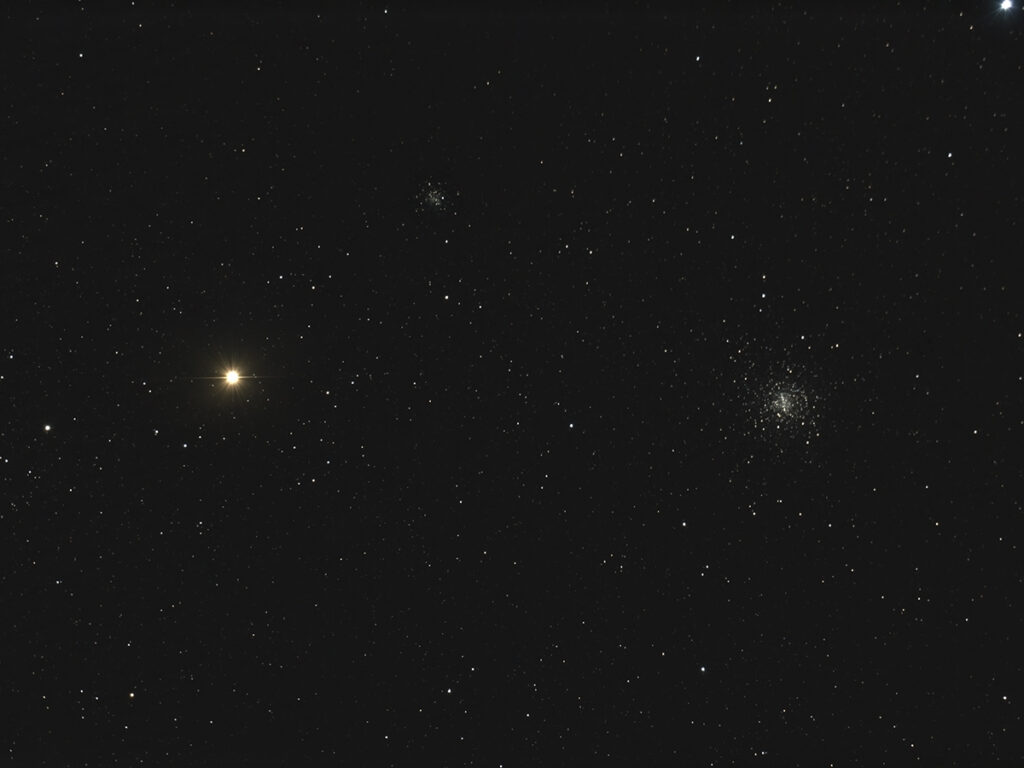
Telescope: ES Comet Hunter MN6 at f/4.8, Orion Atlas EQ-G
Camera: Baader modified Nikon 610
Filter: High Point 2” IR Blocking Filter
Guide scope: Williams Optics 50mm, ASI290MM mini, PHD
Exposure: 48x60sec, ISO 200, saved as RAW
Darks: Internal (Long Exposure Noise Reduction On)
Flats: 32×1/4sec, tee shirt flats taken at dusk
Average Light Pollution: Red zone, Bortle 8, poor transparency
Lensed Sky Quality Meter: 18.0 mag/arc-sec^2
Stacking: Mean with a 2-sigma clip.
White Balance: Nebulosity Automatic
Software: Backyard Nikon, Nebulosity, Deep Sky Stacker, Photoshop
This is a nice example of the wide field offered by the Comet Hunter and the full-frame D610a showing Antares to the left, NGC6144 to the upper right of Antares, M4 on the right, and delta Scorpius (Alniyat) in the upper right corner. Antares is a red super giant with a diameter about 400 times that of the sun. If it were placed at the center of our solar system its surface would extend out beyond the orbit of Mars. M4 is one of the closest globular clusters lying only 7,200 light years away in the general direction of the galactic core. It appears reddish-brown due to dust along the galactic plane. Being so close M4 can be resolved into individual stars in a relatively small telescope. NGC 6144 is somewhat sparse and much farther away at an estimated distance of about 28,000 light years.
Antares and M4 are currently morning objects rising low in the southeast after midnight and transiting in the south shortly after 4am.
Recent Comments